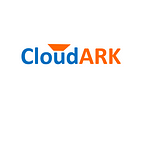B2B software vendors are increasingly getting pulled in two seemingly opposite directions. On the one hand, the need for deploying their software on-premise or in their customer’s environment is strong as ever. On the other hand, they see a pull for their SaaS business as well. Customers seem to make these choices based on multiple factors such as compliance requirements around data storage, the need for integration with legacy systems, cost, etc. And clearly, there is no one-size-fits-all answer to this. This leaves B2B vendors in a situation where letting go of either of these software delivery models is not an option as it directly affects their revenue targets. At the same time, maintaining separate tech stacks, customer support toolchains, and feature function roadmaps is a burden on engineering and client success teams. Is there a path for B2B vendors to simplify and/or unify these efforts? The short answer is — yes! Read on to find out how.
B2B SaaS and on-prem distribution models may seem different like chalk and cheese, but both involve running separate instances of the software per customer. There are additional commonalities as well, such as:
- There is a need to maintain and manage different versions of the software as different customers can be on different versions.
- Customer support teams need access to the running software and its environment for troubleshooting purposes and to perform day 2 operations such as software upgrades.
- Client / Sales teams need a mechanism to track the usage of the software for pricing and chargeback purposes.
Kubernetes offers the starting point to unify these two seemingly different models of software delivery by offering a common infrastructure layer irrespective of where the software is running. This significantly reduces the need to maintain separate tech stacks, however, a number of teams struggle to automate day2 operations, troubleshooting, and monitoring of these multiple instances spread across hybrid multi-cloud environments. Additionally, as you simplify the deployment of the software in the customer’s environment through containerized packaging, B2B software vendors are increasingly seeing demand for a new software delivery method called ‘managed application’: where their customers are asking them to take care of day2 operations of their software deployed in the customer’s environment. This ‘managed application’ delivery method sits in between traditional ‘SaaS’ and ‘s/w distribution’ models. It further enhances the need to be able to manage multiple instances spread across hybrid multi-cloud environments.
KubePlus Operator has been developed to serve exactly this need without having to build any custom automation to manage multiple instances of your software. It takes an application’s Helm chart and wraps a Kubernetes-native API around it. This API simplifies the management of every instance of the software application ensuring separation and security between them. It also enables seamless day 2 operations such as application troubleshooting, resource usage tracking, and application version upgrades.
If you are a B2B software provider, check out KubePlus to explore how you can simplify SaaS or managed service-based delivery for your cloud-native applications.
